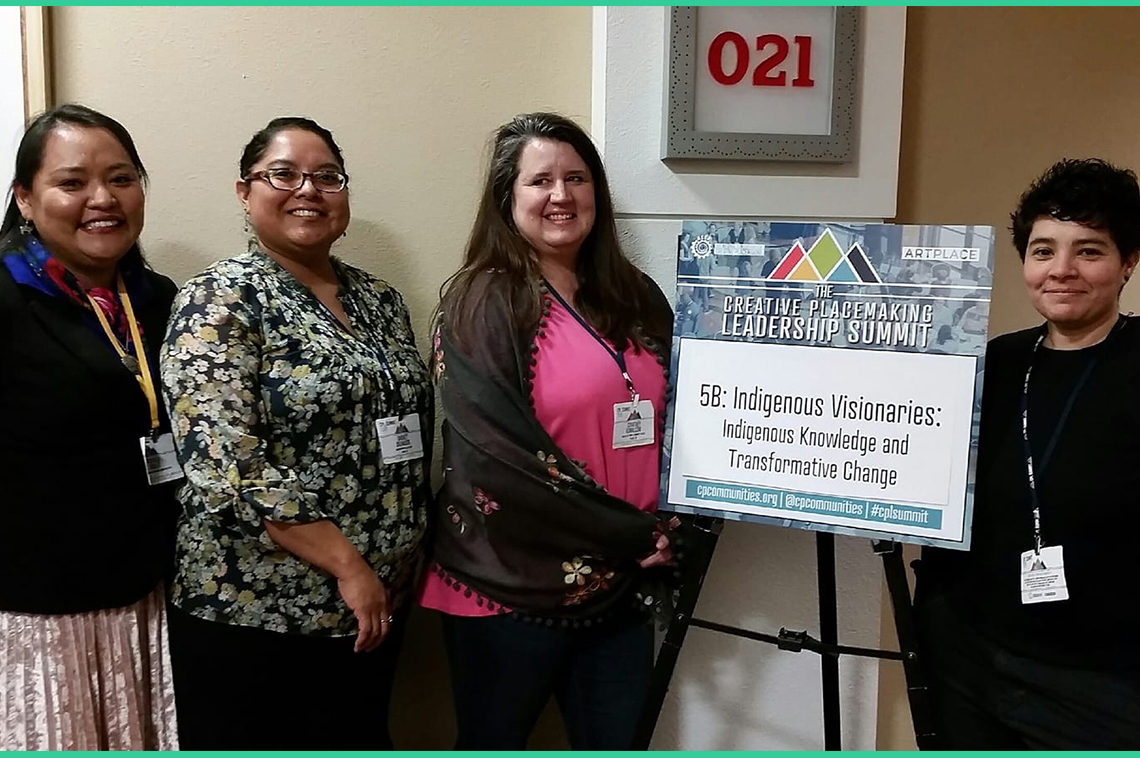
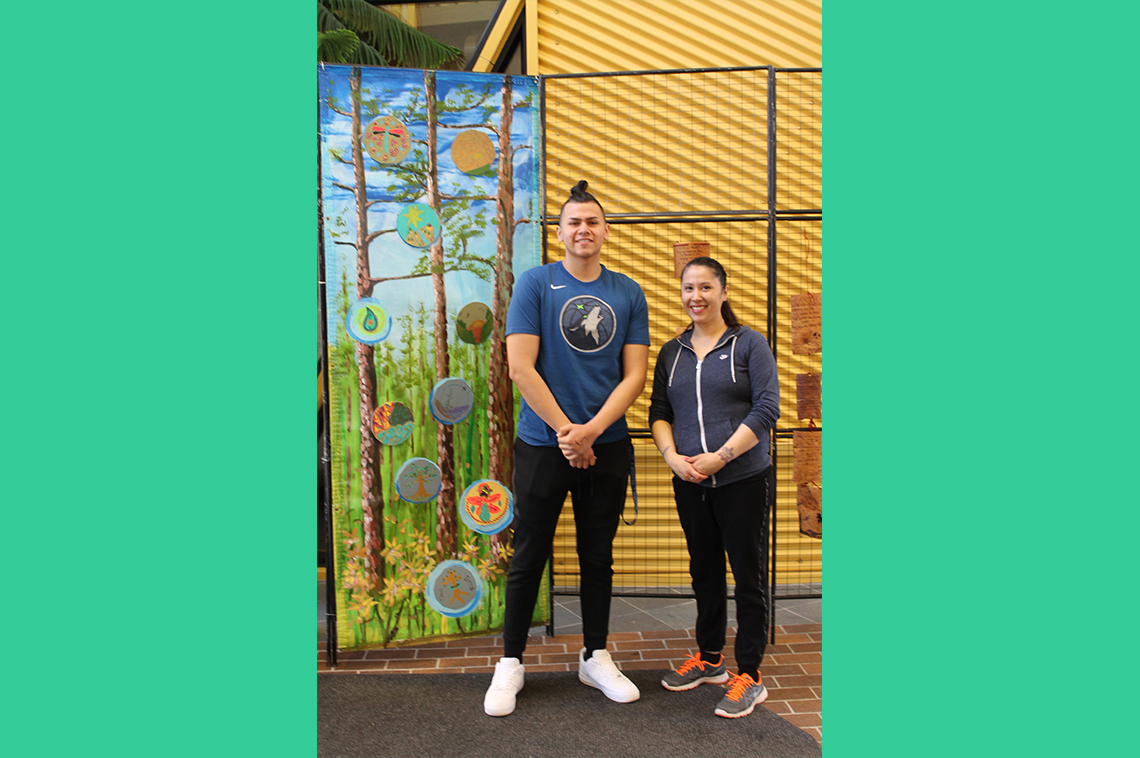
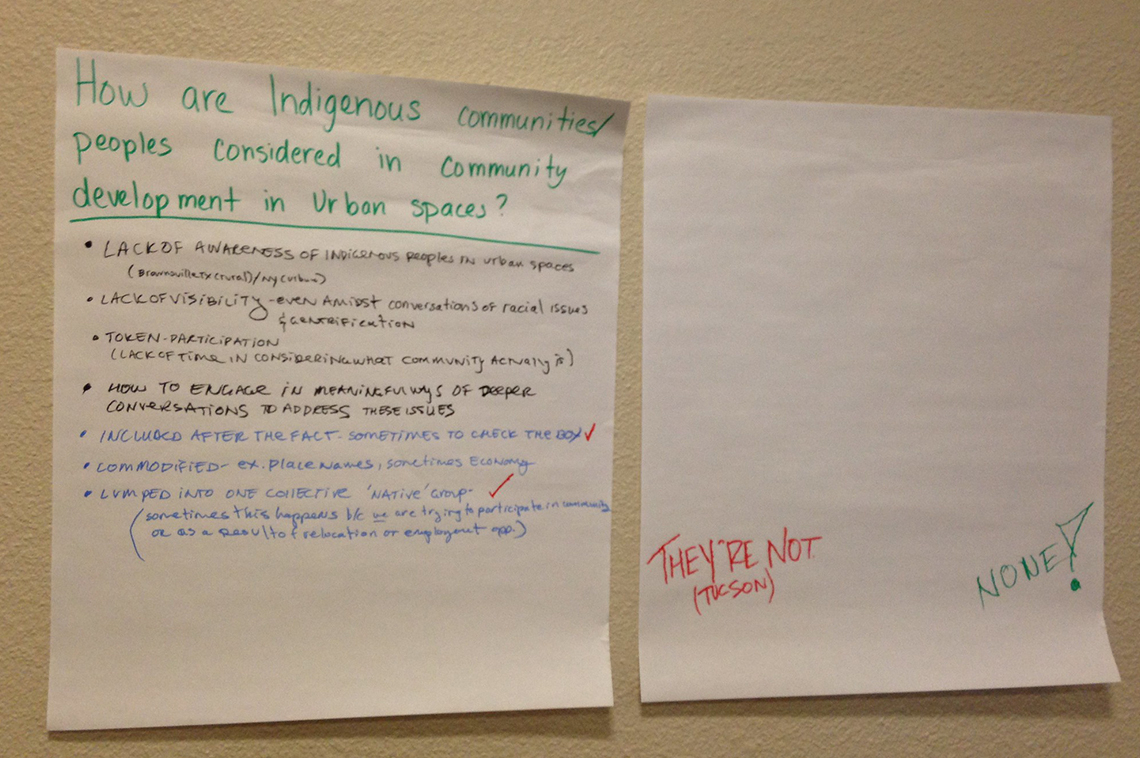
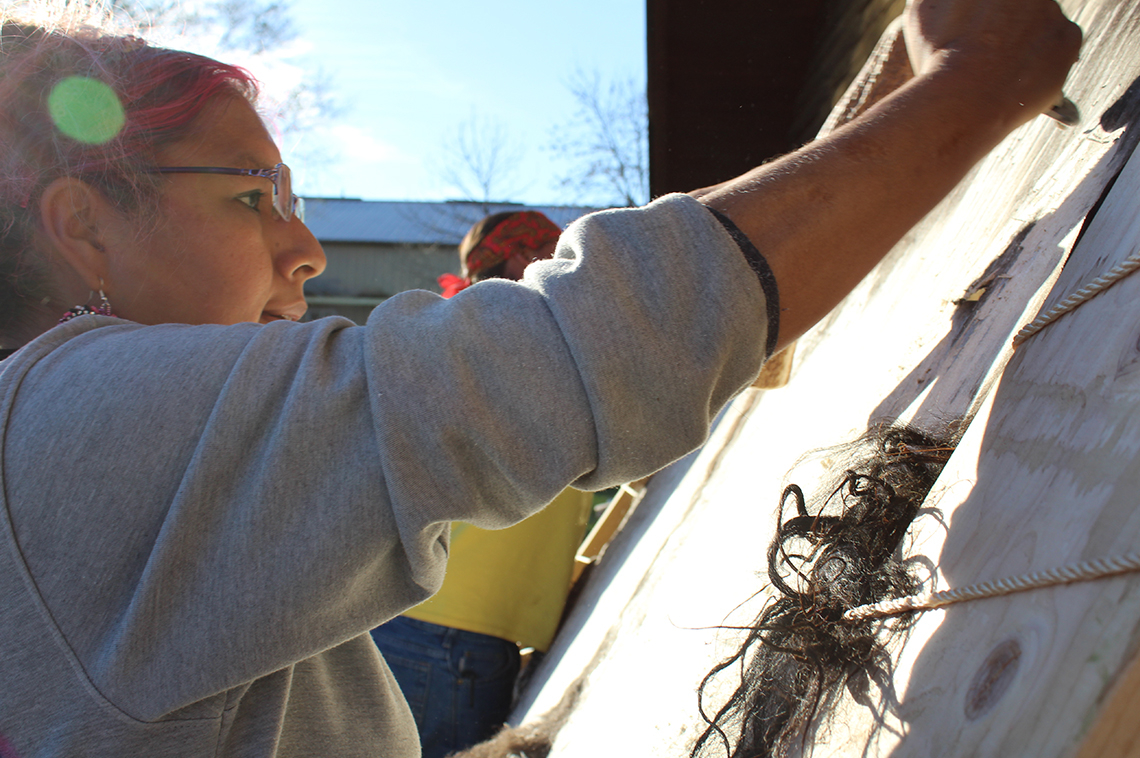
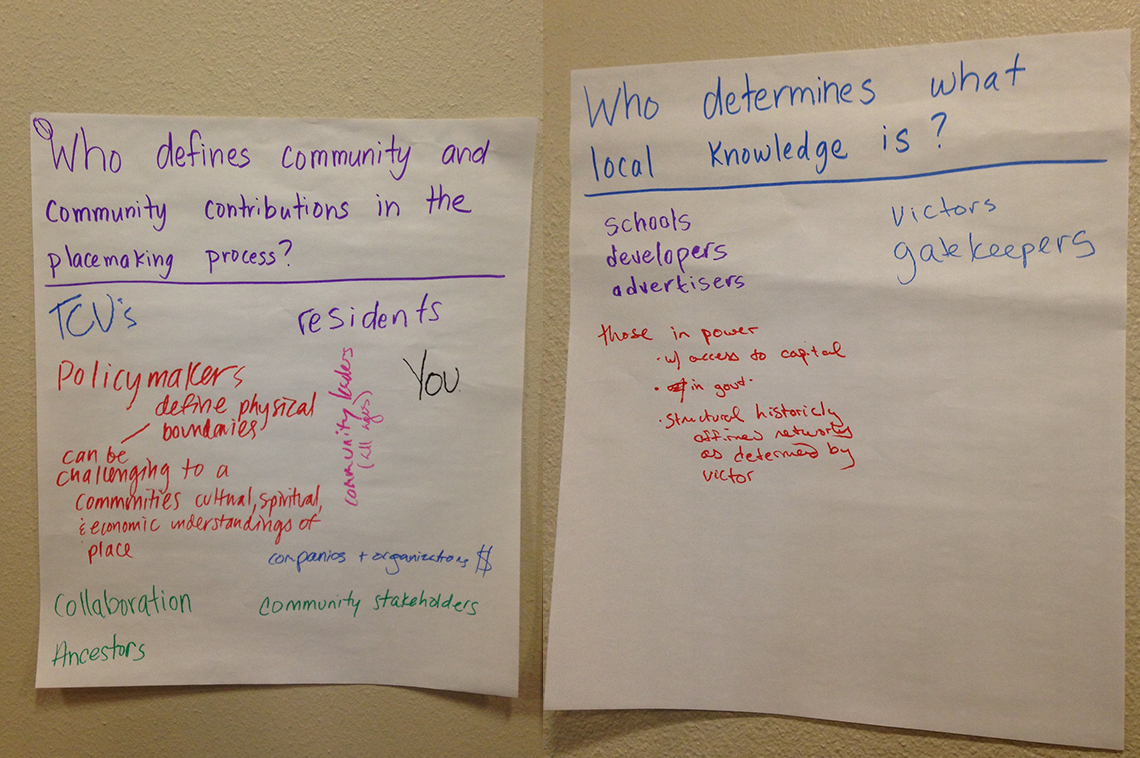
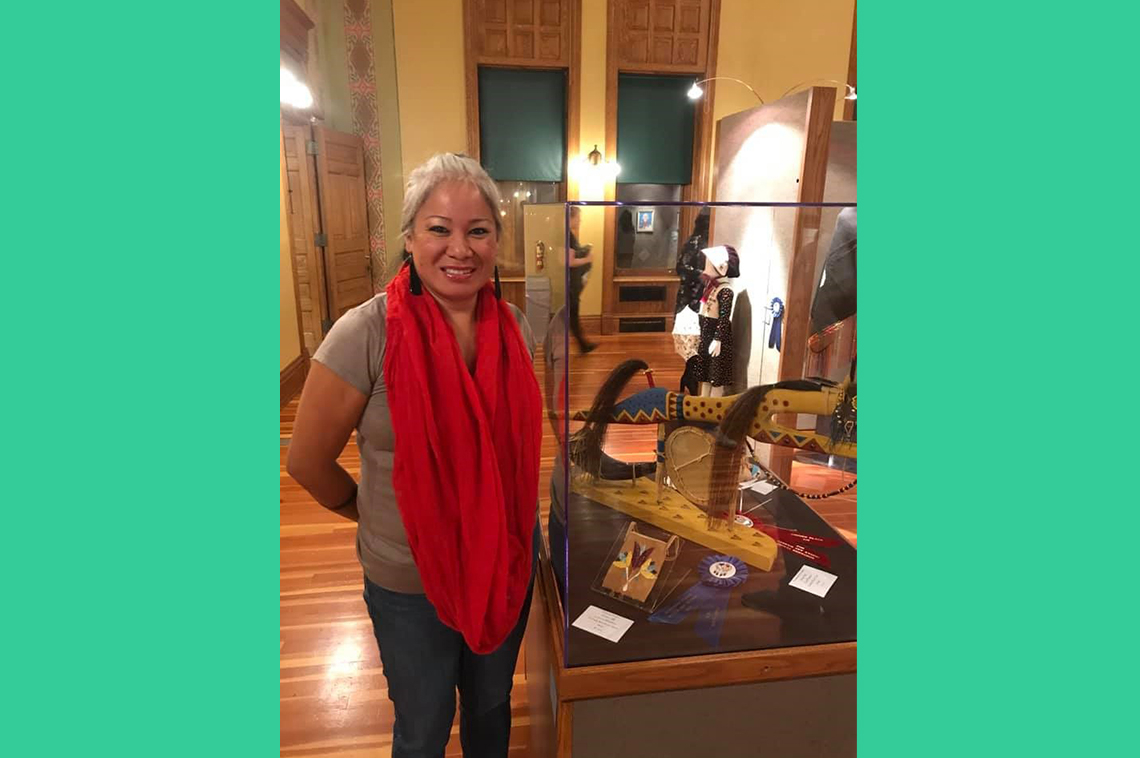
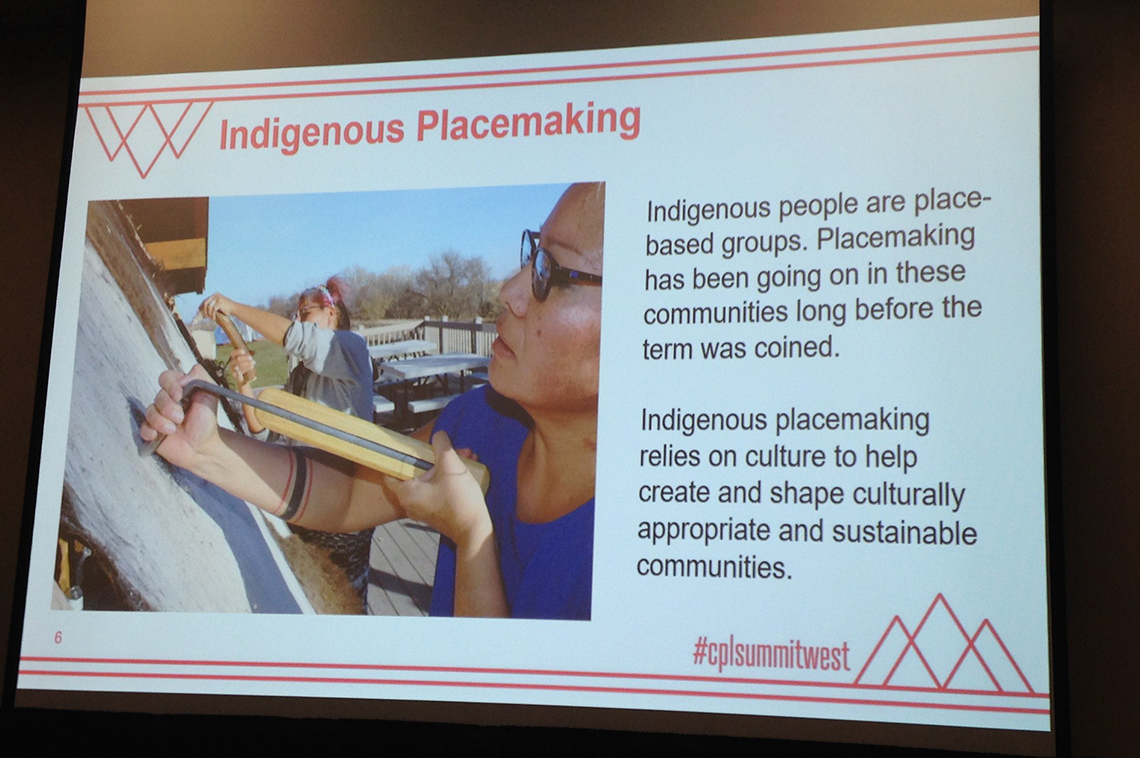
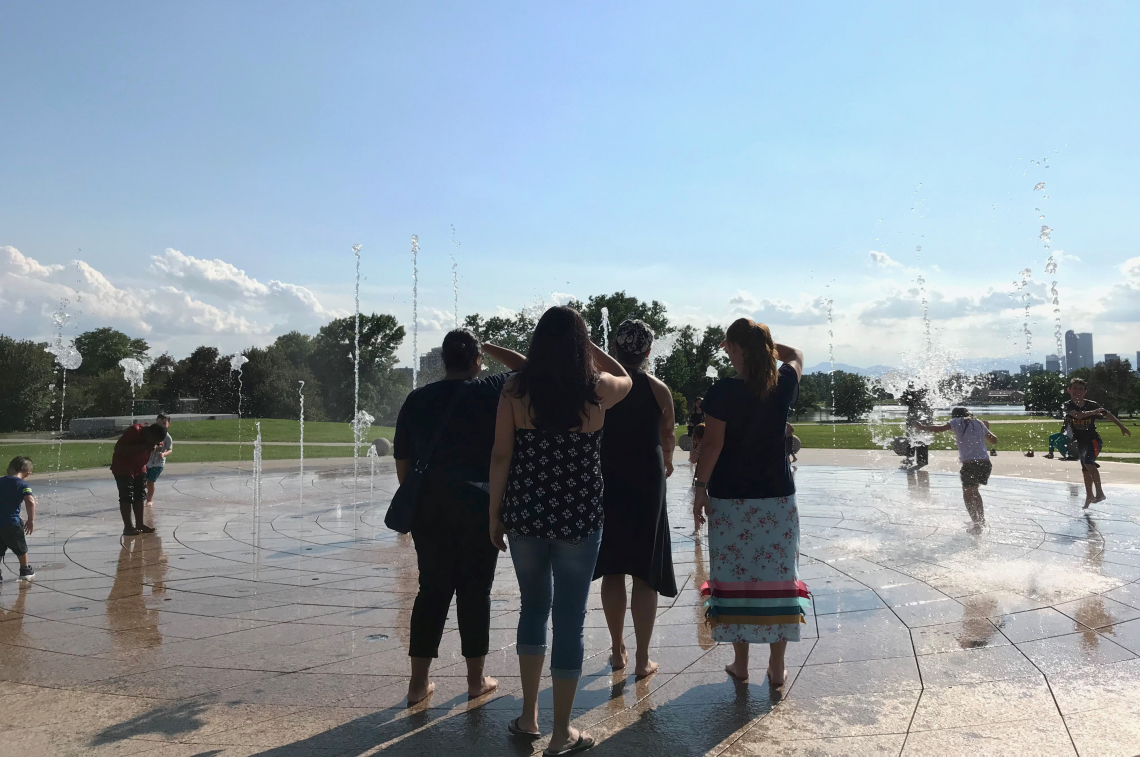
The American Indian College Fund’s Indigenous Visionaries initiative helps develop Native women leaders through education, mentoring, and networking.
The multi-tiered project connects student-fellows at tribal colleges and universities (TCUs) with faculty members in their area of study. The fellows engage in research and programming that builds on their studies, participate in a community project, learn how to address tribal and local issues, and gain an understanding of what it takes to create change in a community. Indigenous Visionaries supports Native women who have a foundation of Indigenous knowledge, culture, and history in amplifying their voices, developing leadership skills, and learning how to employ place-based knowledge systems, with the goal that they will bring visionary leadership to Native communities in the future.
Kendra Teague and Bridget Skenadore of the College Fund, Courtney Kowalczak of partner TCU the Fond du Lac Tribal and Community College (FDLTCC) Environmental Institute, and Michaela Shirley of the University of New Mexico’s Indigenous Design + Planning Institute presented the session “Indigenous Visionaries: Indigenous Knowledge and Transformative Change” at the 2019 Creative Placemaking Leadership Summit West in Albuquerque, New Mexico, this past February. Over the summer, we asked them to take a deeper dive into the collaborative nature of their work together.
ArtPlace: Indigenous Visionaries is an inherently collaborative initiative. What were some of the highlights—and challenges—of working with multiple organizations to get it going?
Kendra: In many ways it wasn’t challenging to establish relationships with the tribal colleges because the College Fund is a trusted organization in working with them. Also, our Program Initiatives team was able to rely on the relationships we as individual program officers had established with faculty, staff, and students within the colleges over time.
The challenge here was knowing from the College Fund’s side that this was important work to invest in [yet] we didn’t have funds designated for it. So our Program Initiatives team focused on what we did have, which was strong relationships [between] female mentors at tribal colleges that worked in three areas of funded work: Early Childhood Education, Native Arts, and Culture and Environmental Sustainability. So we collaborated and utilized [the] resources we did have to support the first cohort of Indigenous Visionaries.
With regards to building a relationship with the Indigenous Design + Planning Institute [iD+Pi], a lot of time and conversations have gone into [it]. As soon as I was introduced to Ted, Michaela, and Chelsey (at the time, the team) and the philosophies that drive iD+Pi’s work, I could see the alignment between what they were doing and the work SEEDS [the College Fund’s Scholarly Emergence for the Environmental Design program] was invested in. iD+Pi seemed to have a bird’s eye view of the work taking place in Indigenous communities. So while it wasn’t necessarily challenging, it took time, belief, and maintaining relationships that brought us and keeps bringing us together in this work.
Overall I would say what stands out is the alignment of thinking about the work and the actions taking place in Indigenous communities and at higher education institutions. I think we—iD+Pi, the College Fund, and the Indigenous Visionaries teams—are all invested in long-term change, current and future generations of people and land, and visibility. Not just for others to see, but even in our own Native communities: to see ourselves as beautiful, innovative, culturally rich, futuristic, and amazing people. We all contributed however we could to work that was already occurring but that created a support system and visibility of the work.
Bridget: The Indigenous Visionaries program was an extension to a previous women’s leadership program that the College Fund managed. The program is unique because it integrates three core College Fund programming initiatives, and each program area has two fellows and one mentor from three TCUs [to] represent [it]. The program is great in that it allows for a closer relationship with each of the participating TCUs and allows us to learn more about each of the fellows and the work they are doing with their community.
ArtPlace: Can you describe a favorite collaboration you learned about or participated in between a Leadership Fellow, a Leadership Mentor, and/or a local community? What made it so special?
Bridget: This past spring, the College Fund hosted an Indigenous Visionaries Native Women’s Leadership retreat for the six student fellows and three faculty mentors. Over a two-day period, it allowed for interaction between fellows, mentors, and College Fund staff. The time together focused on developing fellows’ personal narratives and voice and discussing the role of being a Native Woman Leader. Additionally, there was a focus on developing writing skills, professional communication, and interview skills.
Mentors had the opportunity to meet and discuss the lessons learned from each of their programs. There was a lot of sharing and interaction between all participants. There were times for reflection and times for questions. [Overall,] this retreat provided a safe space for open dialogue. I enjoyed hearing from participants on how much they enjoyed the retreat, meeting the other fellows and learning from one another.
Kendra: I would have to acknowledge, partially because I am more familiar [with it], my collaboration with Arianna Northbird and then her continued collaboration with the Indigenous Visionaries.
When I first met Arianna at FDLTCC’s Environmental Institute, where she was mentored by Courtney, she and the other fellow, Kayla Jackson, were pretty nervous, and didn’t know what to expect in meeting me. Arianna was just much quieter. Soon, though, she participated in Rising Voices 2018, on their first student panel. During the Indigenous Visionaries 2017-2018 year, Arianna and Kayla added three tribal colleges and one mainstream university to the Twin Ports-Consortium Sustainability Network (TP-CSN). This is a student-led initiative to bring regional partners invested in environmental work together. So then, on her own accord, Arianna drove to several tribal colleges in her region to connect and learn about what they were doing in environmental work—and tribal colleges are not based in close proximity to one another.
Arianna has since graduated from FDLTCC and is pursuing her bachelor’s degree in Environment, Sustainability, and Geography with a minor in Environmental Science at the University of Minnesota Duluth (UMD). In her first year at UMD, Arianna continued to make the weekly Indigenous Visionaries meetings to stay involved with the fellows and support the projects they were working on. She has now accepted a VISTA position working with Courtney at FDLTCC’s Environmental Institute. She will be working with Courtney and continue to support the Indigenous Visionaries. Arianna will also be starting her Master’s degree in Tribal Resource Environmental Stewardship next fall! [And she] contributed to a presentation I did at Harvard and to a story about the Indigenous Visionaries that will be published in Shelterforce magazine summer 2020.
It is one thing to see such a powerful transformation of one person—then to see them show up over and over in order to be supportive to others becomes a transformative story in and of itself.
ArtPlace: What advice would you give others who would like to start (or improve) a highly collaborative cultural initiative like Indigenous Visionaries?
Bridget: I think one of the most important things is relationship-building. At the College Fund, we have three program officers who oversee the Native Arts, Culture and Environmental Sustainability, and Early Childhood Education areas and we are working more and more on cross-departmental collaboration with each of [them]. We did that with the Indigenous Visionaries program and the relationships we have built with each other have allowed this program to succeed.
In addition, the College Fund, through previous relationships with female faculty mentors, has built an even stronger relationship with the three [partner] TCUs through the Indigenous Visionaries program.
Kendra: If you are not involved in the work, I think supporting work that is already occurring in communities is important. Joni Connelly and Kayla Dix of [partner TCU] Salish Kootenai College were already invested in language nests and early childhood work. The College Fund’s team built upon relationships with women they trusted to support their passions. Trust the communities you work with to know what they need, and use the skills or knowledge you or others have to support or expand knowledge or capacity.
For everyone involved or getting involved in placemaking work, always remember that Indigenous people all over the world have been knowing and caring for and building place. Really challenge yourselves in the work to listen to how placemaking and placekeeping is occurring. And if you are going to tell the story of someone else’s work, just invite them to tell their own story. If you are going to present on community work, bring the community, bring the artists, bring the elders and the youth to share their own story and to hear for themselves the stories being told.





